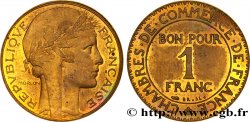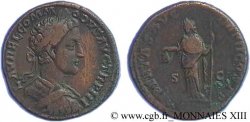v18_0092 - AEGINA - AEGINA ISLAND - AEGINA Statère
MONNAIES 18 (2003)
Starting price : 1 000.00 €
Estimate : 2 000.00 €
Realised price : 1 243.00 €
Number of bids : 2
Maximum bid : 1 350.00 €
Starting price : 1 000.00 €
Estimate : 2 000.00 €
Realised price : 1 243.00 €
Number of bids : 2
Maximum bid : 1 350.00 €
Type : Statère
Date: c. 350-338 AC.
Mint name / Town : Égine
Metal : silver
Diameter : 22 mm
Orientation dies : 6 h.
Weight : 12,25 g.
Rarity : R2
Coments on the condition:
Flan large et complet. Petite faiblesse de fabrication au droit avec une usure superficielle sur la carapace de la tortue et un léger écrasement de la tête. A été frappé avec un coin rouillé au droit. Revers magnifique, de style fin avec une jolie patine de médaillier
Catalogue references :
Predigree :
Cet exemplaire provient du stock Feuardent, n° 6735
Obverse
Obverse legend : ANÉPIGRAPHE.
Obverse description : Tortue terrestre vue de dessus.
Reverse
Reverse legend : ANÉPIGRAPHE.
Reverse description : Carré creux divisé en cinq compartiments ; le troisième canton est orné d’un petit dauphin.
Reverse legend : A-IGI
Commentary
Mêmes coins que l’exemplaire de la collection Dewing (n° 1687). En particulier, cet exemplaire présente les mêmes défauts au niveau de la carapace de la tortue et confirme le fait que l’exemplaire a été frappé avec un coin rouillé.
Same dies as the Dewing Collection example (No. 1687). In particular, this example has the same defects on the turtle's shell and confirms the fact that the example was struck with a rusty die.
Same dies as the Dewing Collection example (No. 1687). In particular, this example has the same defects on the turtle's shell and confirms the fact that the example was struck with a rusty die.








 Report a mistake
Report a mistake Print the page
Print the page Share my selection
Share my selection Ask a question
Ask a question Consign / sell
Consign / sell









